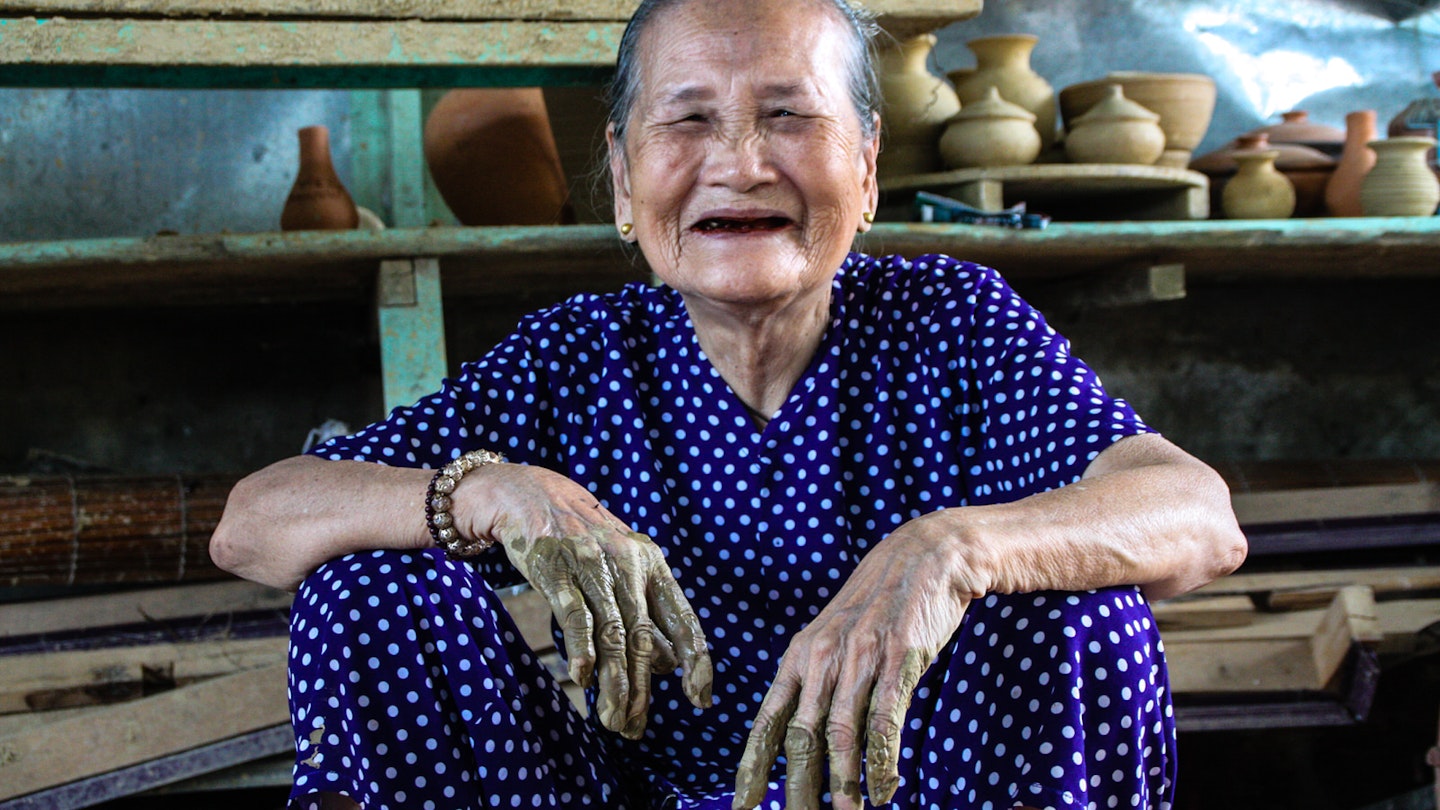Located where the Thu Bon River meets the sea, Hoi An was one of Asia’s premier trading ports for much of its history, attracting artisans from all over Vietnam. Single-craft villages were established nearby to supply international trade as well as the town itself.
When the mouth of the Thu Bon silted up in the late 1800s, the town’s fortunes also dried up, and most artisans dispersed. However, Hoi An’s wonderfully preserved, UNESCO-recognized Old Town has garnered a new set of admirers, and both visitors and artisans have returned. Pottery, woodwork, paper crafts, photography, and paintings can all be found in this picturesque town with a unique history.
Silks, Tiles, and Unique Vases
Ancient Hoi An was renowned for producing high-quality silks and ceramics, including fine vases and clay tiles that continue to adorn the town’s historic shophouses. While you will discover an abundance of silks in Hoi An’s numerous tailor shops, the silk-making trade has largely moved elsewhere. Nevertheless, you can still observe the entire fascinating process, from worm to textile, at the Hoi An Silk Village. A visit to the Museum of Trading Ceramics, located near the famous Japanese Bridge, reveals the intercultural exchange of ceramics, displaying Vietnamese wares that reached as far as Egypt, alongside pottery from 13th to 17th-century China, Japan, and the Middle East found in and around Hoi An.
Pottery is still crafted the traditional way in the 16th-century village of Thanh Ha, situated just 3km west of the Old Town on the Thu Bon. Several homes in this village continue the art of pottery using foot-powered wheels and locally sourced clay. One of the workshops is run by nonagenarian Mrs. Phu, who, alongside her family, has mastered the art of throwing pottery. While the large water urns and other bulky items have been replaced by smaller, travel-friendly decorative pieces, it remains captivating to witness traditional techniques in action.
Woodworking Crafts
Hoi An’s Old Town features over a thousand traditional timber-framed buildings, many adorned with carved pillars and intricate decorative panels, emphasizing the importance of woodworking in the region.
The carpentry village of Kim Bong, located across the Thu Bon from the Old Town on Cam Kim Island, retains this centuries-old craft. The rhythmic sounds of mallets and chisels fill the air as craftsmen engage in shipbuilding and furniture-making. Visitors can watch artisans create exquisitely ornate statues, revealing the beauty of the wood they work with. Observing the meticulous process of inlaying mother-of-pearl, where artisans carve out designs in wood to fit iridescent shell pieces, is particularly fascinating.
Craft Workshops
Craft workshops abound in Hoi An, where you can find artisans working with paper, silver, wood, and other materials. One of the most popular destinations is Reaching Out, a social enterprise that supports individuals with disabilities. Visitors can watch artisans demonstrate their skills in metalworking, lacquer making, paper crafts, and more. Feel free to stop by to simply observe, or you may consider joining a workshop with an English-speaking guide.
Art and Photography
Hoi An’s charming laneways, artistically faded ochre-colored walls, and lantern-lit evenings create an atmospheric backdrop perfect for photography. French photographer Réhahn, known for his intimate portraits that connect viewers with the locals of Hoi An, captures the town’s essence. He attributes his soulful images to Hoi An’s tranquil environment, where a short motorbike ride can take you from the bustling Old Town to serene beaches or countryside. As he states, “Here, I have more time; there’s not much distraction.”
Visual Art in Hoi An
Bridget March, a British visual artist who moved to Hoi An from Ho Chi Minh City, opened her own gallery showcasing her work and that of fellow Vietnam-based artists. Inspired by the town’s colors and rhythms, her etchings and acrylic paintings reflect the patterns and symbols of Hoi An’s rich, 3000-year history.
Where Art Meets Food
The stretch of Phan Boi Chau Street is evolving into an artists’ community, featuring galleries, photographers, and designers. Art Space at the Anantara Hoi An Restaurant combines a gallery and a dining experience, hosting movie nights and arts and crafts workshops. The industrial-style venue showcases works from approximately a dozen artists, and the menu is equally innovative, featuring wood-fired pizzas and unique desserts crafted by Vietnam’s first 3D food printer.





